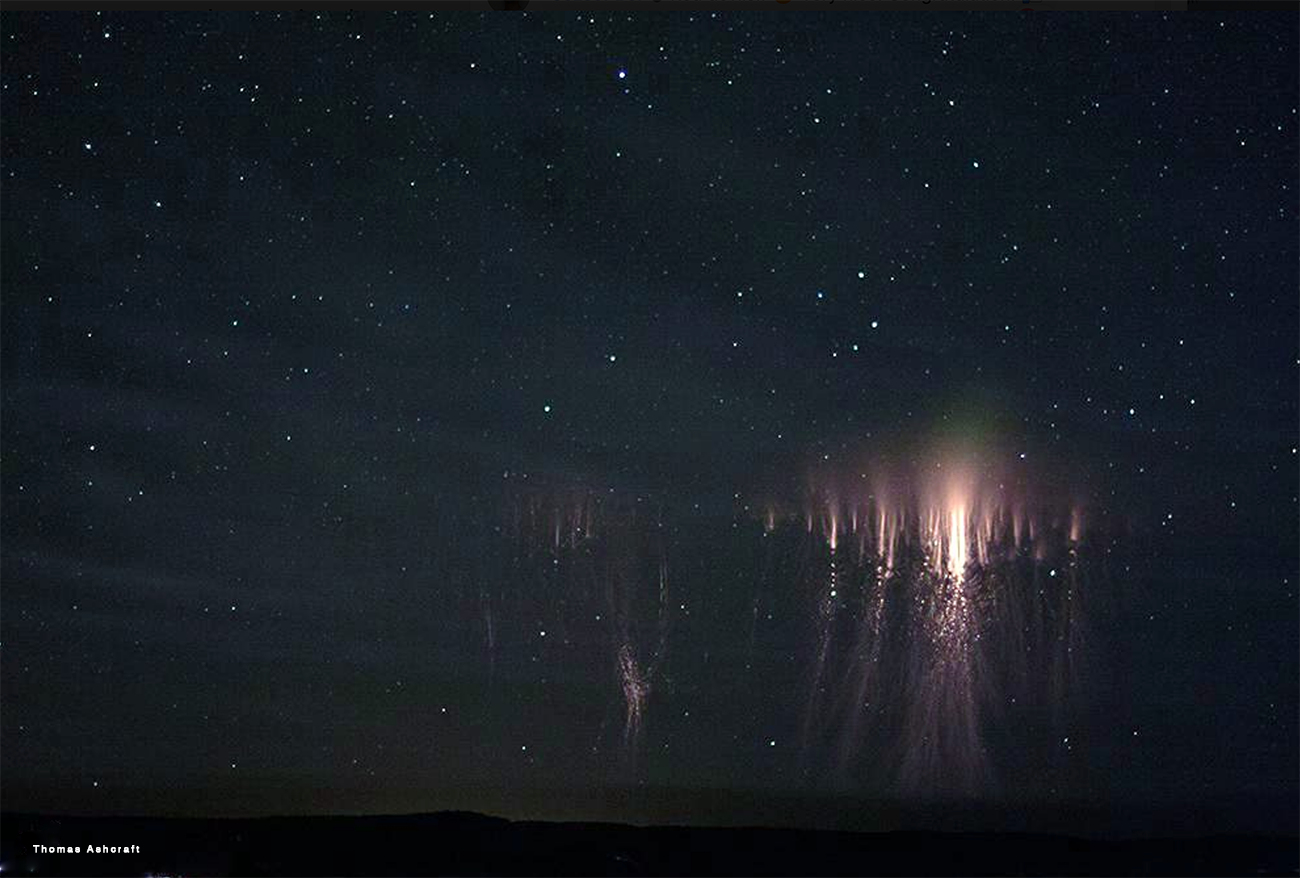The origin of ghosts, a type of atmospheric transient luminous event, revealed
Ghosts (or GHOSTs) are part of a family of events that, although related to thunderstorms, occur in the mesosphere, tens of kilometres above the clouds. The Institute of Astrophysics of Andalusia (IAA-CSIC) leads the first spectroscopic study of these infrequent and brief phenomena, which associates them with unexpected compounds, such as iron and nickel
In the mesosphere, a region of the atmosphere that was believed to be devoid of electrical activity, gigantic and brief luminous flashes occur, the discovery of which, just three decades ago, surprised the scientific community. Given their elusive nature, they were given names taken from Shakespeare's A Midsummer Night's Dream, such as sprites or elves. Related to thunderstorms, but located tens of kilometres above the clouds, they include ghosts (or GHOSTs, GreenisH Optical emission from Sprite Tops), greenish flashes whose origin has been attributed to oxygen. Now, the first spectroscopic study of these events, published in the journal Nature Communications, associates them with metals, such as iron or nickel, which had never been included in optical models of mesospheric flashes.
The ghosts do not appear in isolation, but are observed in the upper region of the sprites, a spectacular light event lasting only a few hundredths of a second that shows a diffuse upper part and a lower region populated by "tentacles" (ten to a hundred-metre-thick filaments of ionised air). The sprites can extend from forty to nearly a hundred kilometres above the ground and sometimes show a greenish ghost over the diffuse upper part, which lingers for hundreds of milliseconds after the disappearance of the sprite that generated it.

"Since the first Transient Luminous Events (TLEs), as we know this family of events, were documented in 1989, people all over the world have sought to capture them during thunderstorms. And, in fact, it was an amateur scientist who first photographed a ghost, the latest discovered member of the TLE family", says María Passas Varo, a researcher at the Institute of Astrophysics of Andalusia (IAA-CSIC) who is leading the work.
Until now, the main hypothesis to explain this greenish flash that appears on some of the most intense elves pointed to the interaction of charged particles (ions) with the atomic oxygen present in the atmosphere, a phenomenon already identified in the greenish colour of auroras. To corroborate this, the scientific team that developed this work began a systematic observation campaign in June 2019 to obtain spectra of the upper region of the sprites (a spectrum provides information on parameters such as the temperature or composition of a celestial object).
"One out of every hundred very intense sprites generates a ghost. We have analysed more than two thousand spectra, and only forty-two were in the high region of the sprite, where ghosts usually appear. It takes a lot of luck and a lot of skill to aim the instrument at the right height, because the observation slit is very narrow and you have to predict where the sprite is going to appear. Of the forty-two spectra, only one had a sufficiently strong signal-to-noise ratio," says María Passas Varo (IAA-CSIC).
That spectrum revealed, for the first time, what produces the ghosts, a process in which oxygen contributes very little. Instead, the team found that the greenish flash is mostly due to metals, iron and nickel, compounds that had never been taken into account when developing optical models for TLEs.
Just that day we observed gravity waves, atmospheric disturbances produced by intense vertical movements in the air, such as those generated by storms", adds María Passas Varo (IAA-CSIC). We knew that there are layers of metals in the atmosphere, which come from the entry of interstellar dust into the atmosphere, and everything suggests that these fluctuations in air density cause the altitude of these layers of metals to vary: this variability would be responsible for the fact that the ghosts do not always appear".
The discovery of these metal atoms implies an update of the models for transient luminous events, the understanding of which is fundamental to understanding how the planet's global electrical circuitry works.
![]()
M. Passas et al. "Spectroscopy of a mesospheric ghost reveals iron emissions". Nature Communications, Dec. 2023
Instituto de Astrofísica de Andalucía (IAA-CSIC)
Unidad de Divulgación y Comunicación
Silbia López de Lacalle - sll[arroba]iaa.es - 958230676
https://www.iaa.csic.es
https://divulgacion.iaa.csic.es

